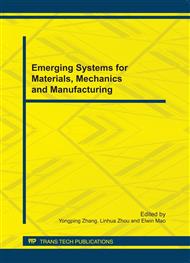p.695
p.699
p.703
p.707
p.711
p.715
p.720
p.725
p.729
Computer Aided Design of Transmission Components of Liquid Stirred Tank
Abstract:
Secondary develop system can realize design automation of the common parts, so that software system can automatically inquire the chart and get data, then this could really release design personnel and improve the design efficiency. By secondary develop system of stirred tank users can respectively carry on the design according to their own needs. So secondary develop system has the function of automatic generation graphics, and can generate CAD drawings complying with the design requirement, so it reflected the intelligent performance of the design system. Secondary develop system is able to complete the automatic design of common parts, and can greatly improve the quality and efficiency of design, so it has very important use value. This design realizes the function of automatic graphics generation of transmission of stirred tank, and can generate structure design of common belt wheel.
Info:
Periodical:
Pages:
711-714
Citation:
Online since:
October 2011
Authors:
Keywords:
Price:
Сopyright:
© 2012 Trans Tech Publications Ltd. All Rights Reserved
Share:
Citation:


